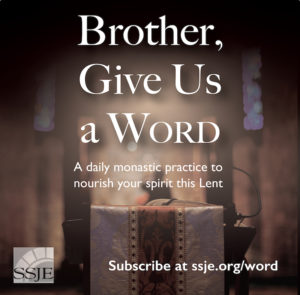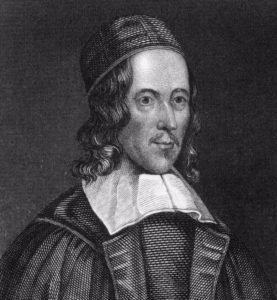In the calendar of the church, each February we commemorate a 17th-century Church of England country parson named George Herbert. Down through the centuries, he is most remembered for his arresting, revealing, passionate poetry.
How Herbert’s life ended is not how it began. The combination of his family’s tremendous wealth and privilege, his keen mind, his excellent education, his charismatic oratorical skills, his internal drive to be fabulous, and who knows what else, had brought him to the top of the heap. By age 30, he was counsellor to two kings and a member of Parliament. He had gained the whole world but never found his soul.1 Two things happened, two breakdowns.
First, his heart broke down, and that had to do with the meaninglessness of his life. His unbridled, Zeus-like power left him abjectly empty. Since his childhood, he had had a sense he was to be a priest. Now in his mid-30s, he realized why this was true: for the salvation of his own soul. Being his own god had left him completely empty. His second breakdown was with his lungs. He had contracted tuberculosis, which had no known cure. He knew his days were numbered, and that had a kind of rarifying effect on how he lived and what he offered of himself, while God gave him breath. His life took on two practices: as priest and as poet.
As a priest, where he served a tiny rural parish near Salisbury, it is as if he had been born again.2 Gone was his pompous sense of privilege. He was revered by his parishioners for his humility, kindness, and tender care; for his tender ministry to the sick, and for his generous care for the poor. As a poet, he described his writings as “a picture of spiritual conflicts between God and my soul before I could subject my will to Jesus, my Master; in whose service I have found perfect freedom.” In his poem, “The Altar,” he describes himself “with a broken heart cemented by tears.” And that was the secret to his healing. Not denying any of his amazing personal gifts, but rather offering his gifts at the altar for God to consecrate and use in ways, far beyond what Herbert could have mustered on his own stage.
By the end of his life – he died at age 39 – he had made peace with his greatness, the end of his internal strife. It was not a denial of his greatness, but a surrender of his greatness to God for God to use as God chose. As a man literally losing his breath to tuberculosis, he wrote the poem:
Come, my Way, my Truth, my Life:
Such a way as gives us breath;
Such a truth as ends all strife,
Such a life as killeth death.3
1. A riff on Jesus’ words: “For what will it profit them if they gain the whole world but forfeit their life? Or what will they give in return for their life?” (Matthew 16:26).
2. Alluding to Jesus’ words in John 3:3.
3. The entire poem:
Come, my Way, my Truth, my Life:
Such a way as gives us breath;
Such a truth as ends all strife,
Such a life as killeth death.
Come, my Light, my Feast, my Strength:
Such a light as shows a feast,
Such a feast as mends in length,
Such a strength as makes his guest.
Come, my Joy, my Love, my Heart:
Such a joy as none can move,
Such a love as none can part,
Such a heart as joys in love.
 For Lent, the SSJE Brothers invite you to take on a simple practice that draws on the rhythm and richness of the monastic life – yet fits into your day. Subscribe now to receive the daily email at 5 AM, starting in Lent. Each day, you’ll receive a word – a truth, a provocation, a practice, a prayer – to nourish your spirit. Subscribe at: SSJE.org/word
For Lent, the SSJE Brothers invite you to take on a simple practice that draws on the rhythm and richness of the monastic life – yet fits into your day. Subscribe now to receive the daily email at 5 AM, starting in Lent. Each day, you’ll receive a word – a truth, a provocation, a practice, a prayer – to nourish your spirit. Subscribe at: SSJE.org/word










Pingback: Come… Give us Breath | Curriculum of the Spiritual Life